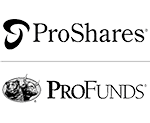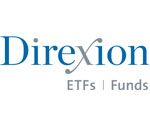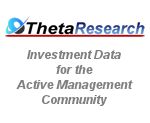The Case for Active Management
Active Managers Don’t Have to be 100% Right
Studies of market indices over the past 70 years show that active managers can actually be on the wrong side of the market nearly 40% of the time and still equal a buy-and-hold return. In other words, the manager could miss 20% of a major up move in the market, participate in 20% of the drop and still equal the S&P 500 due to a phenomenon known as the buy-and-hold equalizer. (Why Market Timing Works, Journal of Portfolio Management, Summer 1997)The equalizer represents the increased leverage an active investment strategy gains by preserving capital during a market drop. The more money an investor has to invest when the market turns up, the greater the performance leverage. Investors can outperform a buy-and-hold strategy even if they don’t participate in the strongest times, as long as they escape major market declines.
Potential to Improve Performance and Reduce Risk
When properly implemented, active management strategies should lessen an investor’s exposure to declining markets, blunting the impact of bear markets and preserving capital and the majority of prior gains. Moving out of the market prior to the majority of a decline means you have more money to invest when the market heads upward. Active investment management is most effective over a full market cycle (3 to 5 years).
Because active management increases the fees on an investment account and can be vulnerable to unprofitable trades in a volatile market, active investment strategies typically do not outperform a buy-and-hold strategy during a rising market or with respect to a specific sector in an up trend.
The reality of down markets provides the rational for active management. Down markets hurt investors in a number of ways. First, the more investors lose money in a down market, the more they lose valuable time and opportunity. Over the past 70 years, the major indices spent nearly 60% of the time sitting out bear markets and then returning to earlier highs. Only about 40% of the time were real gains being made.
The real damage of down markets, however, is created by human behavior. Real people don’t buy and hold. Typical investors hold on in declining markets until the pain becomes too great and then sell out, typically at the market’s bottom. Disillusioned by the loss, they hesitate to reinvest in equities until the market is making record highs — missing out on the opportunity to recoup their losses. Lacking a disciplined system, many investors chase the latest hot stock or sector, encouraged by the media touting the best fund, the best stocks and the best investments for the moment.
Dalbar Financial Services of Boston has published numerous studies on the performance of mutual fund investors. For the period 1984-2003, Dalbar reported the average return of the S&P 500 Index was 12.2%. Equity mutual fund investors during the period achieved an average return of 2.67%, less than the return of 90-day CDs during the same period. This gap is explained by investors chasing the performance or selling at the market’s lows and missing a majority of the upturn.
In another study, Brooks Hamilton audited the results of 6,000 401(k) participants in 1997. In a year when the average equity mutual fund returned 27%, none of the 6,000 participants achieved a return of 27%. A conservative 50/50 stock/bond portfolio would have returned 16% in 1997, yet 60% of the 6,000 participants did not achieve a return of even 16%. Twenty percent of the participants had returns of only 4%.
Through the use of active management strategies, money managers seek investment approaches that moderate the volatility of the market, helping investors stay the course and benefit from the long-term gains of the market and improve risk adjusted returns.
The majority of the approaches used by NAAIM members rely on Technical Analysis, or the study of the movement of the market or individual investments to determine periods and asset classes with the greatest potential for increasing the value of the portfolio















